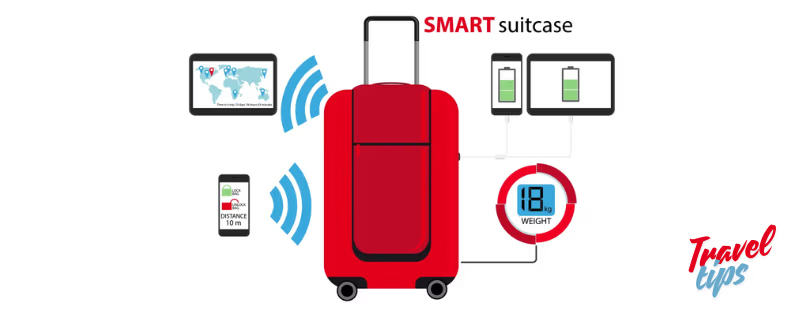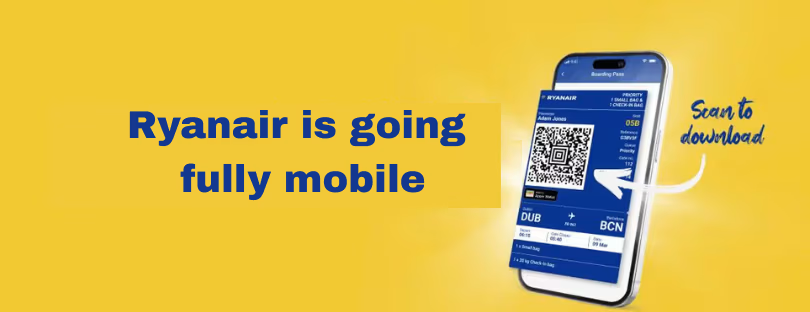
Business Travel Security: Protecting Company Data and Devices Abroad
Business travel presents unique cybersecurity challenges that extend beyond personal travel concerns. When employees travel with company devices and access corporate data abroad, they become high-value targets for cybercriminals and corporate espionage. According to recent statistics, business travelers are 3x more likely to be targeted for data theft than leisure travelers, with over 40% of data breaches in 2025 involving compromised business devices used during international travel. Business Travel Security
This guide provides essential strategies for protecting sensitive company information and devices during business travel, balancing security requirements with the need for productivity and connectivity.
Pre-Departure Security Preparations
Device Preparation and Hardening
Before any international business trip, proper device preparation is essential:
- Implement “travel-only” device policies – Consider providing dedicated travel laptops and phones with minimal data and clean operating system installations for high-risk destinations
- Update all software and firmware – Ensure operating systems, applications, and security tools have the latest security patches
- Enable full-disk encryption – Verify that BitLocker (Windows), FileVault (Mac), or equivalent encryption is active on all devices
- Install and update endpoint protection – Ensure comprehensive security software is installed, updated, and properly configured
- Remove unnecessary data and applications – Minimize the sensitive information stored on travel devices to reduce potential exposure
- Disable unnecessary hardware features – Consider disabling webcams, microphones, and wireless capabilities when not required
Access Management Configuration
Proper access controls significantly reduce risk when devices are lost, stolen, or compromised:
- Implement multi-factor authentication – Require MFA for all corporate resource access, especially VPN, email, and cloud services
- Configure auto-locking and timeout settings – Set devices to lock after brief periods of inactivity (1-2 minutes maximum)
- Review and restrict user permissions – Ensure travelers have access only to resources necessary for their specific trip
- Establish secure authentication methods – Implement biometric authentication when available, with strong password fallbacks
- Configure remote access tools – Ensure secure VPN configurations are tested and functioning properly before departure
Data Protection Strategies
Protecting company data requires both technical and procedural safeguards:
- Implement data loss prevention tools – Configure DLP solutions to monitor and prevent unauthorized data transfers
- Create secure offline copies of essential documents – Store critical presentation files and documents in encrypted containers
- Establish clear data handling procedures – Provide written guidelines for accessing, storing, and transmitting sensitive information
- Configure backup solutions – Ensure automatic, encrypted backups that don’t rely on local storage
- Document emergency data procedures – Create clear instructions for data incident reporting and containment
Secure Connectivity During Travel
Corporate VPN Usage
A properly configured VPN is essential for business travelers:
- Implement always-on VPN configurations – Configure devices to automatically establish VPN connections before any network activity
- Use split tunneling selectively – Consider security implications before allowing direct internet access alongside VPN connections
- Verify VPN functionality in destination countries – Some regions block or restrict VPN usage; have alternative secure access methods ready
- Implement connection verification – Use tools that verify VPN integrity and alert to potential compromises
- Monitor VPN usage patterns – Establish baselines and alert on unusual connection behaviors or locations
Public Wi-Fi Alternatives
Business travelers should minimize public Wi-Fi usage:
- Provide dedicated mobile hotspots – Issue company-managed hotspot devices with proper security configurations
- Establish clear connectivity hierarchy – Create policies prioritizing secure connection methods (corporate hotspot → cellular data → hotel ethernet → public Wi-Fi as last resort)
- Implement network security tools – Deploy solutions that analyze network safety before allowing connections
- Consider eSIM technology – Provide international data capabilities that work across multiple countries without physical SIM swapping
Device and Data Security During Travel
Physical Security Practices
Physical device protection remains crucial:
- Maintain constant device supervision – Never leave devices unattended in public spaces, conference rooms, or hotel rooms
- Use privacy screens – Prevent visual data theft in crowded locations like airports and coffee shops
- Implement tamper-evident measures – Consider security seals or markers that reveal unauthorized physical access
- Secure devices during sleep periods – Use hotel safes with awareness of their limitations, or maintain physical control
- Be aware of surroundings – Practice situational awareness when accessing sensitive information
Secure Communication Protocols
Business communications require additional protection during travel:
- Use encrypted messaging platforms – Implement end-to-end encrypted communication tools for business discussions
- Establish secure document sharing procedures – Use protected channels for transferring files and information
- Implement email security measures – Deploy additional phishing protection and sender verification for traveling executives
- Create verification protocols – Establish methods to confirm unusual requests, especially for financial transactions
- Avoid public discussions of sensitive matters – Be conscious of eavesdropping in public spaces and hotel business centers
Country-Specific Considerations
High-Risk Region Preparations
Some destinations require enhanced security measures:
- Conduct pre-travel risk assessments – Research specific cybersecurity threats at destinations
- Implement country-specific device policies – Consider “burner” devices or specialized configurations for high-risk regions
- Understand legal obligations – Brief travelers on device search laws and data disclosure requirements at borders
- Create border-crossing protocols – Establish procedures for device handling during customs inspections
- Implement “clean” device strategies – Consider traveling with minimal data and securely downloading necessary files after arrival
Compliance with Local Regulations
Navigating international data regulations requires preparation:
- Research data protection laws – Understand how GDPR, CCPA, and local regulations affect data handling
- Document compliance procedures – Provide country-specific guidance on regulatory requirements
- Implement geofencing for sensitive data – Consider solutions that restrict access to certain information based on location
- Prepare for device inspections – Train employees on rights and appropriate responses to border security requests
Incident Response Planning
Recognizing Security Incidents
Quick identification of security events is critical:
- Document warning signs – Train travelers to recognize potential compromise indicators
- Implement automated alerts – Configure systems to notify security teams of suspicious activities
- Establish reporting thresholds – Clearly define what constitutes a reportable security incident
- Create 24/7 reporting channels – Ensure travelers can reach security personnel regardless of time zones
Response Procedures
When incidents occur, clear procedures accelerate containment:
- Develop containment protocols – Create step-by-step instructions for limiting damage from security breaches
- Establish communication chains – Define who must be notified and in what order
- Create device quarantine procedures – Provide instructions for isolating potentially compromised devices
- Document evidence preservation methods – Train travelers on preserving digital evidence when incidents occur
- Prepare recovery processes – Establish procedures for the secure resumption of business activities after incidents
Post-Travel Security Measures
Device and Data Handling
Proper procedures after return reduce persistent threats:
- Implement device inspection protocols – Examine returning devices for signs of tampering or compromise
- Conduct security scans – Perform thorough malware and security scans before reconnecting to corporate networks
- Update credentials – Change passwords and access tokens used during travel
- Review access logs – Check for unauthorized access attempts during the travel period
- Document security lessons – Capture insights for improving future travel security
Continuous Improvement
Each business trip provides opportunities to enhance security:
- Conduct post-travel security debriefs – Gather feedback on security challenges encountered
- Update travel security policies – Refine procedures based on real-world experiences
- Share anonymized lessons – Distribute relevant insights to improve organizational awareness
- Revise risk assessments – Update destination risk profiles based on current experiences
Conclusion
Effective business travel security requires balancing robust protection with practical usability. By implementing these strategies, organizations can significantly reduce the risk of data breaches and device compromise during international business travel while still enabling productivity.
The most successful approach combines technical controls, clear policies, and comprehensive traveler education. When business travelers understand both the risks and their role in security, they become the strongest defense against increasingly sophisticated threats targeting corporate data and devices abroad.
Remember that business travel security is not a one-size-fits-all proposition—tailor these recommendations to your organization’s specific risk profile, compliance requirements, and operational needs to create a security framework that protects company assets without impeding business objectives.











